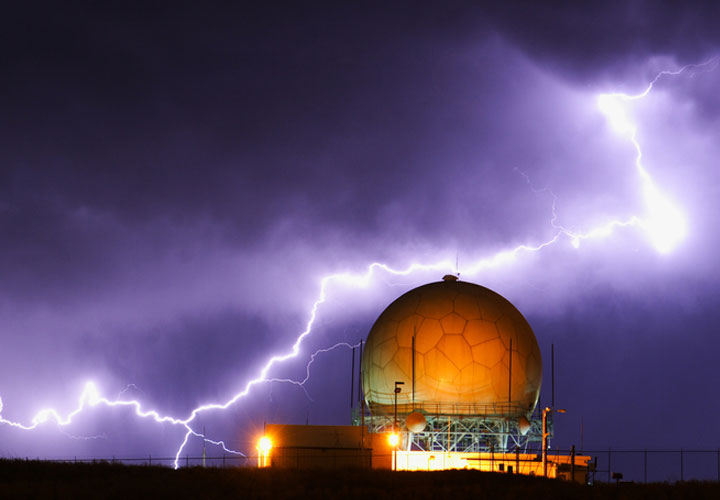
Weather Wizards and Radar Tech
You’re in Northern Georgia, it’s the middle of the week on Thursday and work has been unrelenting. You can’t wait for the weekend but then the “meteorologist” on the local news is telling you that flash floods are coming your way and suddenly your commute has gone from drooling to dangerous.
What the heck’s a “flash flood”? Where did this sudden storm come from, and how the hell did some over-joyous twenty-something year-old predict the weather on your TV screen? This is a combination of both cheesy network TV and a remarkable piece of tech called a doppler radar which has equipped people everywhere with the ability to track weather patterns.
Coined after an Austrian physicist named Doppler from the 1800’s, the doppler radar is a machine that launches microwaves in the sky that spread out in the atmosphere. When the microwaves hit large objects such as the water in a rainstorm, they bounce back towards the machine that records the microwave data. The machine translates the recorded information and uses it to determine how far the storm is along with its shape and size. Since the radar determines the storm’s position, it can also detect the shifts in the return information, which allows it to determine the direction and velocity the storm is moving in. Through constant monitoring of the information sent to the device, weather wizards who use this technology for your local news network track the size and movements of storms in the atmosphere.
Now, you may be thinking to yourself, “Wow that must be a ton of microwaves that these tween-reporters are recklessly shooting into the air to ‘predict’ the weather.”
The truth is that the doppler devices only spend about 7 seconds an hour projecting microwaves and then spend the rest of their time waiting for the information to bounce back to them.
You’re wondering why microwaves are used in the first place and there’s a reason since you mostly associate them with warming your food in 90-seconds flat. The truth is that on the electromagnetic spectrum radio and microwaves are two of the biggest wavelengths in the spectrum compared to ultraviolet, infrared, and gamma waves. When the wavelengths return at a higher frequency it means the object is getting closer, it then returns lower, then the object is getting further away.
These doppler machines are how your news anchors have the ability to track storms and determine how heavy rainfall might be and the areas that need to be on the look-out. This is incredibly beneficial for you if you’re a commuter since this week’s forecast suggests flash floods in large cities in Northern Georgia.
Currently, your weather anchor is reporting to you that there are storm clouds moving in from the West and carrying with them a high likelihood of heavy rainfall. The wind is blowing North-East and if you’re paying attention to the low hanging clouds you’ll see they’re soaked with rain and moving at about 7 MPH. The likelihood of inconvenience and disaster is headed your way in the shape of a mile-long stretch of nimbus. When the water drops from the clouds like a wrung-out sponge it can produce spontaneous waves of water that cause floods in a matter of hours.
Flash floods are floods that can occur between 3-6 hours of heavy rainfall. These floods can occur quickly and areas in North Georgia such as Atlanta that have creeks near roads and highways can be more susceptible to them. It takes just 12-inches of rain to cause automobiles to lose control which means that accidents are more likely to ruin your waning work week. So as you race home from work this weekend and find yourself seeking legal advice from an Atlanta car accident lawyer because you were involved in an auto accident, remember that local meteorologist tried to warn you.


